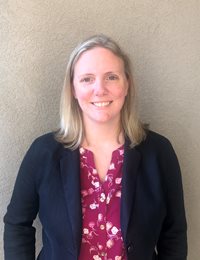
©AndreyPopov/iStock/Getty Images Plus
FEI’s Professional Accounting Fellow Jazmin Gamboa spoke with LeaseQuery’s Accounting Director Sarah O’Sullivan about what the The Financial Accounting Standards Board’s (FASB’s) latest proposed ASU for lease accounting (Topic 842) means, the benefits of applying a risk-free rate by class of underlying assets, and the sectors of private companies that could be most impacted.
Jazmin Gamboa: Would you please first share a brief, high-level summary of the proposed changes by the FASB released this week?
 Sarah O’Sullivan: ASC 842 allows private companies to make an optional policy election to use a risk-free rate (rather than the incremental borrowing rate) as the discount rate for determining lease classification and measuring the lease liability. Currently, the standard requires this policy election to be made at the entity-wide level for the entire lease portfolio (and all leases within it). The FASB’s proposed ASU released on June 16 would amend that requirement and provide private companies the ability to apply the risk-free rate election at the asset class level. As a result, private companies would be able to elect to use the risk-free rate for specific asset classes while using the incremental borrowing rate for others.
Sarah O’Sullivan: ASC 842 allows private companies to make an optional policy election to use a risk-free rate (rather than the incremental borrowing rate) as the discount rate for determining lease classification and measuring the lease liability. Currently, the standard requires this policy election to be made at the entity-wide level for the entire lease portfolio (and all leases within it). The FASB’s proposed ASU released on June 16 would amend that requirement and provide private companies the ability to apply the risk-free rate election at the asset class level. As a result, private companies would be able to elect to use the risk-free rate for specific asset classes while using the incremental borrowing rate for others.
Gamboa: What are some of the benefits of applying a risk-free rate by class of underlying assets?
O’Sullivan: Public companies have already been required to adopt ASC 842 and their implementation experience showed that determining the incremental borrowing rate is both a complex and cost intensive process. The risk-free rate policy election helps simplify implementation and reduce costs for private companies. While using the risk-free rate eases the burden of implementation for private companies, it also results in larger lease liability and right-of-use asset balances as the risk-free rate will generally be lower than a company’s incremental borrowing rate. This latest proposal from the FASB would provide private companies with even more flexibility, allowing them the ability to strategically apply the risk-free rate or incremental borrowing rate at an asset class level. For example, a private company might choose to use the incremental borrowing rate for material asset classes (those that would have a more significant financial statement impact) but leverage the ease of using a risk-free rate for other asset classes.
Gamboa: Which industries could be most impacted by the change?
O’Sullivan: Private companies with significant lease activity across a variety of asset classes will be the most impacted by this proposal. These are the types of companies that will find a greater benefit from having the flexibility to apply the risk-free rate election by asset class, whereas those private companies with small lease portfolios are more likely to find the most benefit from applying the risk-free rate election to all of their leases.
Gamboa: When should companies start thinking about operationalizing the updates in order to be compliant with the effective date for private companies?
O’Sullivan: The discount rate has a direct impact on the accounting for leases under ASC 842. As such, a company’s policy election related to using the risk-free rate or incremental borrowing rate will be a critical step in their implementation process. Since ASC 842 is not yet effective for private companies, many of these organizations will be able to incorporate the proposed amendment (if and when it is finalized) as part of their initial adoption and can begin thinking now about the strategy they want to use. Private companies that have already adopted ASC 842 will want to closely monitor the status of this proposal and should start reviewing their lease portfolios now to help them determine if taking advantage of the proposed changes will benefit them.
Gamboa: From a systems perspective, how much work would an update to using a risk free rate by underlying asset class entail?
O’Sullivan: The proposed changes to the risk-free rate policy election will have minimal systems impacts to those private companies that have not yet adopted ASC 842 as they should be able to incorporate the amendment into their current implementation process relatively easily. However, private companies that have already adopted ASC 842 should keep in mind that changing the discount rate used in their lease accounting will result in a cumulative-effect adjustment to their existing lease balances. These organizations will want to review their lease accounting software to ensure it has the functionality needed to allow them to easily and quickly apply different discount rates at an asset class level and calculate the required adjustment.